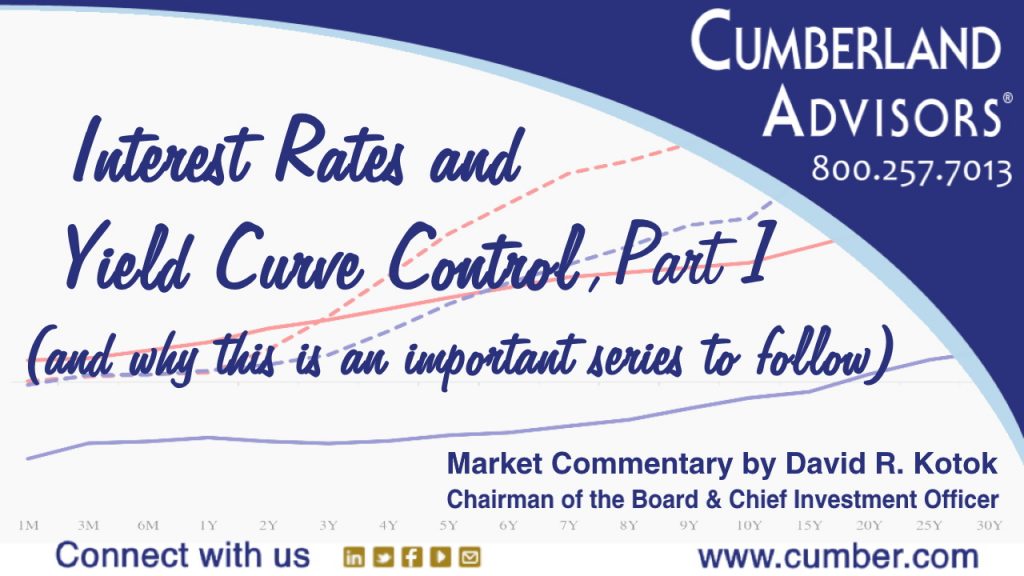“The Trimmed Mean PCE inflation rate is an alternative measure of core inflation in the price index for personal consumption expenditures (PCE). It is calculated by staff at the Dallas Fed, using data from the Bureau of Economic Analysis (BEA).” Through June 2020, “The Trimmed Mean PCE inflation rate over the 12 months ending in June was 1.8 percent. According to the BEA, the overall [June] PCE inflation rate was 0.8 percent on a 12-month basis and the inflation rate for PCE excluding food and energy was 0.9 percent on a 12-month basis.” (“Trimmed Mean PCE Inflation Rate,” https://www.dallasfed.org/research/pce)
The annualized one-month trimmed mean PCE inflation rate was 2.8% in January and plummeted to 1.1% in March; April was 1.3%; May was 1.5%; June was 1.7%. Note the steady increase of PCE inflation over the last four months. Using the trimmed mean PCE as the inflation measure of choice, we can conclude that the entire Treasury yield curve is now trading at negative REAL interest rates. We will have more on this later in this series (today is part 1).
In our view this is an important series to follow. Reason: Fed Chair Powell has publicly mentioned that he follows it. In simple terms the idea of trimmed mean inflation is to discard the very volatile items in the inflation statistics and thus narrow the estimate of inflation to the price changes of the majority of items in the center of the distribution. In Powell’s words, “It cuts off the big movements on the upside and the downside, looks at the mean movements of inflation on the various product categories and service categories.” (“Just when you got used to core inflation, Powell talks up another measure – ‘trimmed mean’,” MarketWatch, https://www.marketwatch.com/amp/story/just-when-you-got-used-to-core-inflation-powell-talks-up-another-measure-trimmed-mean-2019-05-01)
In my experience, the concept of trimmed mean has been controversial, with advocates (including me) facing off against detractors. Readers may want to look at all historical series that estimate rates of inflation. That’s what I do. Together they help me assess the rate of changes in prices.
The trimmed mean inflation estimation method originated, along with the trimmed mean CPI, in pioneering work done at the Cleveland Fed by Steve Cecchetti (now professor of global finance at Brandeis International Business School) and carried forward by Mike Bryan (now vice president and senior economist at the Atlanta Fed). Here is a link to the Cleveland Fed’s trimmed mean CPI monthly report: https://www.clevelandfed.org/our-research/indicators-and-data/median-cpi.aspx.
(Bryan and Cecchetti and their colleagues produced a wealth of research on inflation measurement when they were in Cleveland and since. Here is another of their seminal papers: “Measuring Core Inflation,” https://www.clevelandfed.org/newsroom-and-events/publications/working-papers/working-papers-archives/1993-working-papers/wp-9304-measuring-core-inflation.aspx.)
I’ve had occasion to participate on panels with Steve and Mike and respectfully hope I can articulate this concept in simple layman’s terms for our readers. The statistical method to optimize the “trimming” is, however, complex.
We believe that the trimmed mean estimation process has become extremely important during this very volatile pandemic period. We can see that volatility by examining the reports from the Dallas Fed and Cleveland Fed. I personally review them in detail every month as they are released.
Normally the various measures of inflation track closely with one another. We would expect that in normal times. But these are not normal times. That is why the trimmed mean process is important.
The trimmed mean estimation tells us that inflation bottomed coincidentally with the March–April plummet in the US and global economies. For the US, the sensitive (monthly and annualized) numbers suggest that inflation is gradually reappearing. We believe these early signs must be respected.
The implication is that US interest rates are nearing or have reached a bottom. We will have more to say about that as this series on rates and yield curve controls is published.
At Cumberland, we are using a barbell approach now in our managed bond accounts. The degree of barbell shifting and the structure of the barbells is a topic for a technical conversation that can be held with a number of folks in Cumberland’s fixed-income division. The trimmed mean methodology suggests that the fierce deflation pressures from the pandemic ended in March, coinciding with the bottoming of the economy and the March 23rd bottom in the US stock market. Readers, please note that is an early and not yet confirmed assertion. It will be a year before we have sufficient data to verify this assertion.
Also, note that at Cumberland we are portfolio managers, and our job is to assess and respond to changes in trends and in risk. Inflation shifting is an extremely important item for the performance of both bonds and stocks. That is why we are so focused on it. We’re working on part 2 of this series now.
David R. Kotok
Chairman of the Board & Chief Investment Officer
Email | Bio
Links to other websites or electronic media controlled or offered by Third-Parties (non-affiliates of Cumberland Advisors) are provided only as a reference and courtesy to our users. Cumberland Advisors has no control over such websites, does not recommend or endorse any opinions, ideas, products, information, or content of such sites, and makes no warranties as to the accuracy, completeness, reliability or suitability of their content. Cumberland Advisors hereby disclaims liability for any information, materials, products or services posted or offered at any of the Third-Party websites. The Third-Party may have a privacy and/or security policy different from that of Cumberland Advisors. Therefore, please refer to the specific privacy and security policies of the Third-Party when accessing their websites.
Sign up for our FREE Cumberland Market Commentaries
Cumberland Advisors Market Commentaries offer insights and analysis on upcoming, important economic issues that potentially impact global financial markets. Our team shares their thinking on global economic developments, market news and other factors that often influence investment opportunities and strategies.


